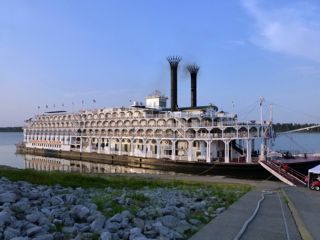forum
library
tutorial
contact

Officials: No River Dredging this Year
Eric BarkerLewiston Tribune, August 16, 2013
|
the film forum library tutorial contact |

|
Officials: No River Dredging this Year
Eric BarkerLewiston Tribune, August 16, 2013 |
Project postponed as Army Corps completes environmental reviews
 Shippers facing an ever-shrinking navigation channel in the lower Snake and Clearwater rivers won't receive any relief this winter.
Shippers facing an ever-shrinking navigation channel in the lower Snake and Clearwater rivers won't receive any relief this winter.
The U.S. Army Corps of Engineers has delayed a controversial plan to dredge and deepen the channel and berthing areas at the ports of Lewiston and Clarkston until December 2014 at the earliest. The agency had hoped to complete an environmental review and a needed contract bidding process in time to allow dredging this winter. But delays related to the complexity of technical and environmental reviews that need to be completed before the work can begin have stalled the project.
"We just decided, let's delay the proposed dredging plan for this winter," said Bruce Henrickson, a spokesman for the corps' Walla Walla District. "Our schedule had become tight anyway, and when we took another look here, we decided, yeah, we need to delay at least the dredging portion. We are continuing to work on the environmental impact statement, although right now the completion date for the final draft of the environmental impact statement remains unclear."
Short-term dredging was called for in the corps' 20-year plan to deal with the accumulation of sand and silt near the confluence of the Snake and Clearwater rivers. The agency has been working on its programmatic sediment management plan since 2005 and has spent $16 million coming up with alternatives and studying the environmental effects.
Among other measures, the plan calls for removing about 3,000 cubic yards of sediment from the Port of Lewiston, more than 10,000 cubic yards from the Port of Clarkston and 407,000 cubic yards from the shipping channel. The spoils will be disposed downstream near Knoxway Canyon and used to create habitat for juvenile salmon and steelhead.
But the plan is controversial, and has become a proxy for the ongoing fight over the four lower Snake River dams and whether they should be breached to recover threatened and endangered runs of wild salmon and steelhead.
The corps, ports and agricultural interests argue dredging is needed to maintain the shipping channel at a depth of 14 feet to allow barges - which mostly transport wheat to the Port of Portland - to continue to use the river system.
Salmon advocates argue the needs of fish are more important than maintaining the river as a transportation corridor and say dredging will cost nearly $40 million over the next decade. The corps, however, did not include a cost estimate in its draft sediment management plan and has no plans to do so in the final plan. The river was last dredged in 2006.
Dredging is required to occur between Dec. 15 and Feb. 28, known as a fish window, when it will do the least harm to salmon and steelhead. Since the technical and environmental review won't be complete by that time, the soonest the work can now occur is next winter.
Adding to the delay, Henrickson said corps officials recently determined the ports need to acquire their own permits before the berthing areas can be dredged. In past dredging projects, the ports have been allowed to piggyback on the corps permit.
"Part of overall mix is the requirement for the ports to get their own permits, and the timing of that is unknown at this time," he said. "It will likely take months for the ports to get their permits."
Port of Clarkston Manager Wanda Keefer said the delay will make it more difficult for the American Empress to call on the port. The cruise ship, which has the deepest draft of any tour boat that travels up the Snake River from the lower Columbia River, is slated to return to the Lewiston-Clarkston Valley next year.
In the past, the ship has docked at the port for only about eight hours, giving cruisers little time to spend money in local shops and restaurants. Keefer said the American Empress is slated next year to bring people from the lower Columbia to the Lewiston-Clarkston Valley, where their trip will end. Other people will then board the ship and travel down river.
"If you are on a cruise boat and the food is all paid for, why would you eat in local restaurants? But if you are driving in from outside, how could you not eat at a local restaurant or two or three or four," she said.
Keefer said sediment buildup at the port's cruise ship dock and its crane dock could play havoc with those plans.
"It will definitely be a problem if dredging does not occur this fish window," she said.
Keefer said she still has hope the ports won't have to apply for their own permits, adding that doing so would be redundant since the corps would issue the permits and it already has all the pertinent information. But she said the port will get a permit if it needs to.
"If that is the hoop we have to jump through we will get it done, because we believe in the river system and we believe the transportation component and the tourism component are essential to this community," she said.
Port of Lewiston Manager David Doeringsfeld is out of the office this week and could not be reached for comment. Kristin Meira, executive director of the Pacific Northwest Waterways Association, an industry group that represents ports and businesses that use the river system, did not return a call seeking comment.
learn more on topics covered in the film
see the video
read the script
learn the songs
discussion forum
